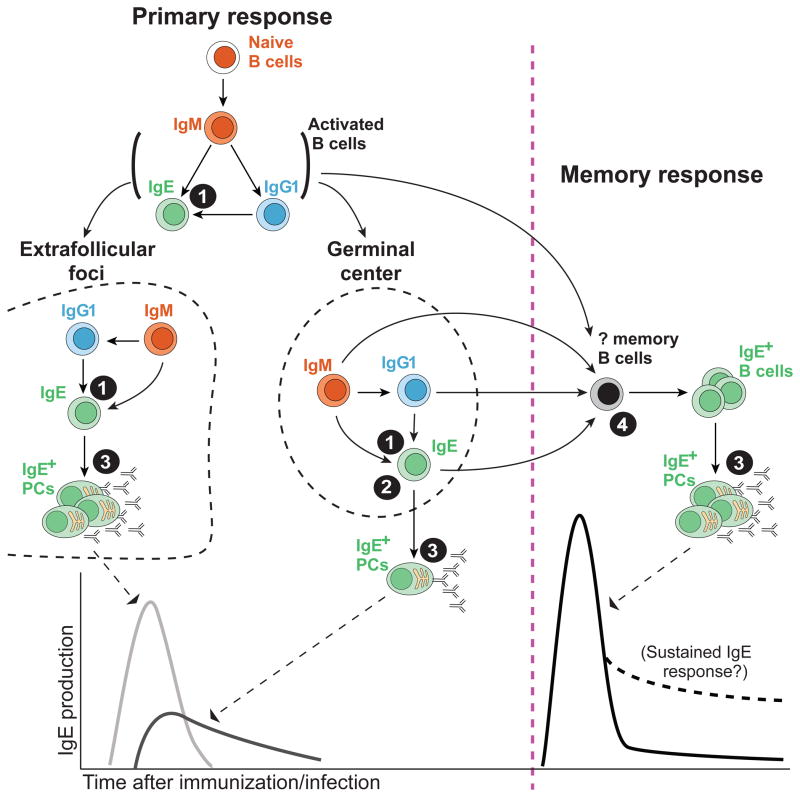Figure 2.
Overview of the cellular differentiation pathways and regulatory mechanisms in IgE antibody production. B cells may undergo CSR to IgE by either direct switching from IgM or sequential switching through an IgG1 intermediate. CSR to IgE may occur in activated B cells before they segregate to form extrafollicular foci and germinal centers, and/or inside these regions after they are formed. IgE+ B cells in extrafollicular foci and GCs give rise to two overlapping waves of IgE+ PCs in primary immune responses. In secondary immune responses, memory B cells may already express IgE or undergo de novo CSR to IgE, generating a new wave of IgE+ PCs. Sustained IgE antibody production may occur in atopic diseases. The filled circles with numbers designate key steps in the regulation of IgE responses: 1) CSR to IgE is infrequent due to intrinsic and extrinsic factors; 2) IgE+ B cells are only transiently present in GCs, limiting IgE affinity maturation; 3) IgE+ B cells are predisposed to differentiate into short-lived PCs; and 4) IgE memory responses are restrained by the low frequency of IgE+ memory B cells and a potential requirement for de novo CSR to IgE.

